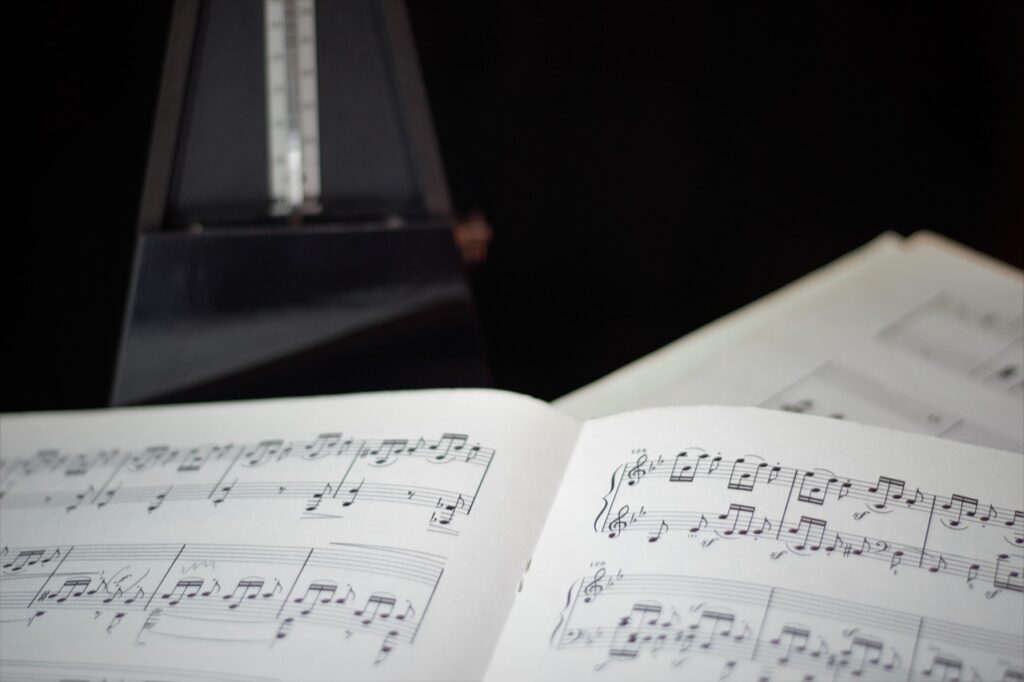An incredible instrumentalist can play out a piece of music at a wide assortment of beats. To genuinely control her instrument, she should have the option to play a section similarly as compellingly at a quick speed as she would at a drowsy speed, as well as the other way around. For a long time, performers have worked on playing at various beats by utilizing a gadget known as a metronome.

What is a Metronome?
A Metronome meaning is a device or music tool that delivers tempo at a standard time frame. You can set how quickly you would like it to go on beats each second. Mechanical metronomes, which have been around for a considerable length of time, have a pendulum that swings. You can likewise utilize an electronic metronome or even a metronome application on your phone.
Metronomes have been utilized for a long time, however in 1815, the German creator Johann Maelzel licensed it explicitly as a device for performers. Metronomes have been extensively utilized by performers from now on.
What Are the Functions of a Metronome?
A metronome is a mechanical device that is precise and reliable over time. It maintains track of timing for you. It stops you from hurrying or dragging the beat and makes you focus on where the beat is. The player will decide what that interval is, but the possibilities are as follows-
1. Quarter notes
Most players adjust their metronomes such that one click corresponds to a quarter note when they use them. Quarter notes are the premise of 4/4 time, otherwise called normal time. In 4/4 time there are four beats for each action. A quarter note addresses one beat in 4/4 time, so there are four quarter notes for every action.
2. Eighth Notes
Some musicians decide to use the metronome to click on eighth notes. If your beat is an eighth note, as in 6/8 or 12/8, a rhythm of 60 beats per minute implies there are 60 eighth notes each moment, and that implies there are 30 quarter notes each moment, or one-quarter note every two seconds.
3. Dotted quarter notes
Dotted quarter notes are easily divided into certain time signatures which mostly includes-3/8, 6/8, 9/8, and 12/8. For example, a full measure of 6/8 is equal to two dotted quarter notes. Thus, while using a metronome in 6/8 time, some players choose to use six clicks, where an eighth note is clicked each time, and some choose to use two clicks, where a dotted quarter note is clicked each time.
How is a Metronome used in music?
A metronome is utilized in two essential ways by performers.
- As a training device ensure you are playing at a consistent beat.
- As a recording instrument to ensure a presentation is metrically exact. Metronomes utilized for recording is famous as a “click track.” They are very famous in the recording of film scores, where the music should match up to individual edges of the film. They’re additionally famous in pop accounts where there will be loads of overdubbing. The most common way of overdubbing is genuinely simple when the beat is locked to a metronome; it tends to be very troublesome when it is not.
There’s no requirement for digital metronomes to seem like a click as it were. On the off chance that you’re utilizing a Google metronome, you can make any recorded sound play along at a consistent beat. Hence, numerous computerized metronomes explicitly highlight this feature.
How to use a Metronome in music:
Here is a step-by-step guide to using Metronome correctly-
1. Select a Metronome
There are different types of Metronomes available; you can use any type of Metronome as per your preference. There is a classic mechanical device, a pocket-size electronic Metronome, or just a Metronome app on your phone.
2. Set the tempo
Set the beat in quarter notes, eighth notes, or dabbed notes according to your inclination. A few portable metronomes will try and permit you to tap the beat on your screen to get the related rhythm. Most computerized metronomes will utilize BPM or beat each moment as a method for estimating the speed of the piece.
3. Set the time signature
Start with a time signature that allows you to play all of the right notes and the right rhythms. Time signature comprises 2 numbers composed how you would compose a mathematical fraction. The top number demonstrates the quantity of beats in an action. The base number shows the value of the beat.
4. Gradually increase the volume
When you are playing a piece with complete accuracy at a specific rhythm, slowly speed up. This can be a drawn-out project, by which you speed up by one score of the metronome every day until you have upset to your objective rhythm.
A significant additional step while utilizing a metronome with sheet music: Mark your beats in the printed music. While utilizing a metronome, it’s critical to comprehend the rhythms that you’re playing as well as their right situation concerning the beat.
Why it’s Important to Use a Metronome:
It’s important to use Metronome, particularly while learning a new piece.
When you’re playing a certain passage, adjust the tempo such that you can play every note accurately.
As you slow down the music, maintain proportionality in your beats.
Practice all of the material at the same pace; don’t practice the simple passages quickly and the challenging ones slowly. In this manner, the beats will be accurate and well-ingrained when you speed it up again.
Allow enough time for your brain to process new knowledge. Good practice cannot rush.
Conclusion
A metronome can assist you with keeping a reliable rhythm so you don’t incidentally accelerate or slow down. Here we have described all the possible details regarding the Metronome such as the usage and the importance of the metronome in music.